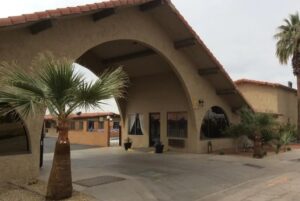Southern California Still a Growing Tourist Area
Southern California Still a Growing Tourist Area
The Orange County Register
10/07/17
Southern California Still a Growing Tourist Area
By Jonathan Lansner
http://www.ocregister.com/2017/10/06/southern-california-still-a-growing-tourist-trap
Southern California’s tourism trade looks to be enjoying a relatively solid 2017.
Industry stats show busy local airports, hotels a bit challenged by an increase of rooms to fill, and leisure and hospitality bosses continue to hire.
Tourism’s days of hot expansion out of the recession may be over. Yet the year’s modest progress isn’t shabby considering the numerous challenges from wobbly economic prospects limiting business travel to international tensions trimming foreign visits to the anticipation of Disneyland’s upcoming Star Wars attraction, which may delay some trips.
Here’s a look at three key yardsticks of the region’s tourism trade …
Busy skies
Why does your favorite local airport seem so crowded?
Don’t blame security checks as it’s been a busy year so far for Southern California airports.
According to data from the six major airports, 62.9 million passengers went through the area’s terminals in 2017’s first seven months, up 2.8 million in a year or a gain of 4.7 percent.
Much of that regional passenger gain occurred at giant Los Angeles International. Its 37.1 million passengers were up 1.2 million year to date, a gain of 3.3 percent.
Long Beach Airport had the biggest percentage gain in the area: Its 2.2 million passengers were up 43 percent in a year.
Hollywood Burbank Airport’s 2.6 million count was up 13.6 percent. Ontario Airport had 2.6 million passengers so far in 2017, up 6.8 percent. And San Diego Airport drew 12.6 million, up 5.3 percent.
The only Southern California travel decline was at Orange County’s John Wayne Airport, as its 5.9 million passengers were off 1.8 percent vs. 2016.
Too roomy?
Is the local hotel industry too eager to expand?
Southern California hotels appeared to be struggling with a growing supply of empty rooms this summer. In August, for example, all five local markets tracked by CBRE Hotels had dips in occupancy rates vs. a year ago, while room rates fell in Los Angeles and Orange County compared with 2016.
Local hotel owners have added competition this year amid an industry building surge. Additionally, hotels may be paying a price for increasing room rates and making visitors rethink their lodging plans.
Year to date, all five Southern California markets had higher average room rates vs. the first eight months of 2016 but only two markets — Palm Springs and San Diego — filled a higher share of rooms in 2017.
Here’s how local markets have fared, year-to-date through August vs. 2016’s results for the same period for average room rates and occupancy, according to CBRE Hotels data …
Los Angeles: Averaged $211 a night, up $1 in a year; 84 percent full vs. 85.4 percent a year ago.
Orange County: $191 — up $5; 81.1 percent full vs. 81.9 percent.
Western Inland Empire: $118 — up $6; 78.9 percent full, flat vs. 2016.
Palm Springs: $195 — up $5; 66.6 percent full vs. 65.4 percent.
San Diego: $194 — up $7; 83.3 percent full vs. 82 percent.
A strong tourism rebound from the recession has gotten hotel developers busy.
Atlas Hospitality reported that in 2017’s first half, 10 hotels opened in Los Angeles with 2,527 rooms total; three opened in both Orange County (461 rooms) and Inland Empire (411 rooms), and two in San Diego (433 rooms.)
And Atlas says developers have filed plans in the five-county area to build 410 more hotels with 67,805 rooms — though nowhere near all will be built any year soon.
Hiring spree
Workers and wages started 2017 in growth mode at Southern California’s leisure and hospitality industries.
In the five-county area, leisure and hospitality bosses employed 1.07 million in the first quarter, up 30,500 or 2.9 percent in a year, federal jobs figures show. This job category includes workers at theme parks and other local attractions as well as staffs at restaurants, both fast-food and sit-down eateries.
San Bernardino County had the fastest pace of leisure and hospitality hiring with a 5.8 percent increase in a year. Job growth in all Southern California industries was 2 percent.
The average weekly wage for leisure and hospitality workers, many of whom do not work full time, was $541 in the first quarter after rising 7 percent in a year.
Orange County had the industry’s largest wage gain at 8.7 percent. In an era where bosses scramble to find qualified workers, wage growth at all Southern California businesses was 7.4 percent.
Here is how Southern California’s leisure and hospitality bosses hired and paid, by county, for the first quarter vs. first three months of 2016 …
Los Angeles County: 506,800 jobs, up 2.6 percent; pay $621 a week, up 6.7 percent.
Orange County: 211,200 jobs, up 2.1 percent; pay $499 a week, up 8.7 percent.
San Diego County: 190,000 jobs, up 3.4 percent; pay $495 a week, up 6.9 percent.
Riverside County: 93,100 jobs, up 3.5 percent; pay $430 a week, up 6.2 percent.
San Bernardino County: 73,200 jobs, up 5.8 percent; pay $363 a week, up 6.5 percent.
Remember, leisure and hospitality businesses depend heavily on confident consumers and the local tourist trade. And industry bosses adding staff strongly suggests they see solid conditions for future growth.


